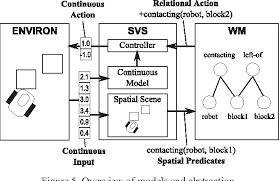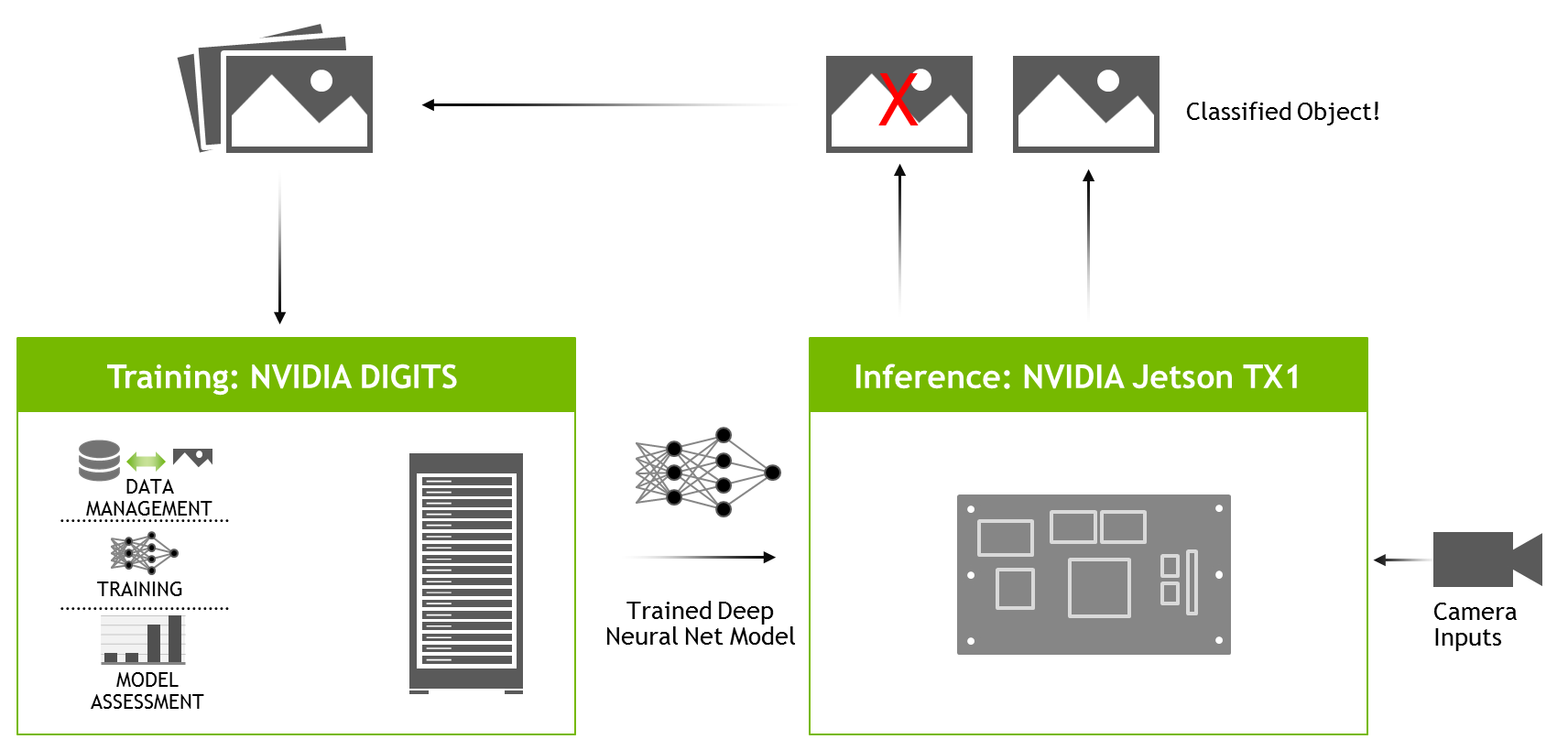
Deep Blue, NETtalk or Igor Aizenberg’s Word2vec algorithms are good places to start if your interest is in machine learning history. Marvin Minsky’s Perceptron is also a good place to start. All of these were used in order to make AI better than humans. These were significant breakthroughs in AI technology that have changed the course of human history. Continue reading to find out more about these revolutionary technologies.
Deep Blue
The first computer that beat the human world at chess was called Deep Blue. Its victory is considered a milestone in machine learning history. It has been the subject of many books and movies. Deep Blue is now considered the gold standard in machine learning. However, this wasn't always the case. In fact, the human mind is still the best machine learner. So, what can we learn from the Deep Blue victory? These are some lessons learned from the game

Ray Solomonoff's NETtalk
Ray Solomonoff, a pioneer in machine learning, was a prominent figure in the 1950s. Solomonoff is known as the father and founder of artificial intelligence. His contributions to machine learning, prediction, probability and statistics first came to light in 1956 when he circulated a document. He was expected to give an invited lecture at AGI 2010, even though he was in serious health. The event has been renamed in his honor "In Memory of Ray Solomonoff."
Word2vec algorithm by Igor Aizenberg
Word2vec is a key algorithm in machine learning history. Igor Aizenberg's algorithm laid the foundation for many other highly effective algorithms. Although the word2vec algorithm has been most commonly used in neural networks, it can also be applied to image recognition and computervision. LSTM and CNN are also examples of machine learning algorithms.
Marvin Minsky’s Perceptron
Marvin Minsky, the villain, is depicted in the standard version history of connectionism. Minsky and his colleagues actually built the first 'learning machine' in 1951, the SNARC. Their Ph.D. dissertation centered on their work. This article will look at Minsky's contribution towards machine learning history. Despite its negative reputation in the machine learning world, the Perceptron has been regarded as one of our most important achievements.
ImageNet
In 2008, ImageNet had zero images. It had cataloged three million images by December 2008 and more than 6,000 synsets. In April 2010, ImageNet had categorized eleven million images. The challenge was largely made possible by crowdsourcing on the Mechanical Turk platform. In 2010, ImageNet's first Large Scale Visual Recognition Challenge organized, where participants were required to classify photos. It was a huge success and all the top-scoring competitors were deep neuro networks.

Ray Solomonoff’s Inductive Inference Machine
Ray Solomonoff's work, known as the Inductive Inference Maker, helped open the door to deep neural networks. Algorithmic Probability was a theory that was based on probability. He presented five models in his reports, which lasted until 1964. His work also laid the philosophical foundation for the Bayes rule of causation.
FAQ
Are there any AI-related risks?
Yes. They always will. AI is a significant threat to society, according to some experts. Others believe that AI is beneficial and necessary for improving the quality of life.
The biggest concern about AI is the potential for misuse. It could have dangerous consequences if AI becomes too powerful. This includes things like autonomous weapons and robot overlords.
AI could take over jobs. Many fear that AI will replace humans. But others think that artificial intelligence could free up workers to focus on other aspects of their job.
For instance, some economists predict that automation could increase productivity and reduce unemployment.
Who invented AI?
Alan Turing
Turing was first born in 1912. His father was clergyman and his mom was a nurse. At school, he excelled at mathematics but became depressed after being rejected by Cambridge University. He began playing chess, and won many tournaments. He worked as a codebreaker in Britain's Bletchley Park, where he cracked German codes.
He died on April 5, 1954.
John McCarthy
McCarthy was born in 1928. Before joining MIT, he studied maths at Princeton University. There he developed the LISP programming language. He had laid the foundations to modern AI by 1957.
He died in 2011.
What are the benefits to AI?
Artificial Intelligence (AI) is a new technology that could revolutionize our lives. Artificial Intelligence has revolutionized healthcare and finance. It is expected to have profound consequences on every aspect of government services and education by 2025.
AI is being used already to solve problems in the areas of medicine, transportation, energy security, manufacturing, and transport. The possibilities of AI are limitless as new applications become available.
So what exactly makes it so special? First, it learns. Computers are able to learn and retain information without any training, which is a big advantage over humans. Instead of teaching them, they simply observe patterns in the world and then apply those learned skills when needed.
AI is distinguished from other types of software by its ability to quickly learn. Computers can process millions of pages of text per second. They can quickly translate languages and recognize faces.
It can also complete tasks faster than humans because it doesn't require human intervention. It can even surpass us in certain situations.
In 2017, researchers created a chatbot called Eugene Goostman. Numerous people were fooled by the bot into believing that it was Vladimir Putin.
This shows that AI can be extremely convincing. Another advantage of AI is its adaptability. It can be easily trained to perform new tasks efficiently and effectively.
This means businesses don't need large investments in expensive IT infrastructures or to hire large numbers.
Which countries are leaders in the AI market today, and why?
China leads the global Artificial Intelligence market with more than $2 billion in revenue generated in 2018. China's AI industry is led by Baidu, Alibaba Group Holding Ltd., Tencent Holdings Ltd., Huawei Technologies Co. Ltd., and Xiaomi Technology Inc.
China's government is heavily involved in the development and deployment of AI. Many research centers have been set up by the Chinese government to improve AI capabilities. These centers include the National Laboratory of Pattern Recognition and the State Key Lab of Virtual Reality Technology and Systems.
China is home to many of the biggest companies around the globe, such as Baidu, Tencent, Tencent, Baidu, and Xiaomi. All these companies are active in developing their own AI strategies.
India is another country that is making significant progress in the development of AI and related technologies. India's government is currently focusing their efforts on creating an AI ecosystem.
Which industries use AI most frequently?
The automotive industry was one of the first to embrace AI. For example, BMW AG uses AI to diagnose car problems, Ford Motor Company uses AI to develop self-driving cars, and General Motors uses AI to power its autonomous vehicle fleet.
Other AI industries are banking, insurance and healthcare.
What is the current state of the AI sector?
The AI industry is expanding at an incredible rate. The internet will connect to over 50 billion devices by 2020 according to some estimates. This will allow us all to access AI technology on our laptops, tablets, phones, and smartphones.
This means that businesses must adapt to the changing market in order stay competitive. Businesses that fail to adapt will lose customers to those who do.
This begs the question: What kind of business model do you think you would use to make these opportunities work for you? Would you create a platform where people could upload their data and connect it to other users? Perhaps you could also offer services such a voice recognition or image recognition.
Whatever you choose to do, be sure to think about how you can position yourself against your competition. While you won't always win the game, it is possible to win big if your strategy is sound and you keep innovating.
What is AI and why is it important?
It is expected that there will be billions of connected devices within the next 30 years. These devices will include everything from cars to fridges. Internet of Things, or IoT, is the amalgamation of billions of devices together with the internet. IoT devices will be able to communicate and share information with each other. They will be able make their own decisions. A fridge might decide to order more milk based upon past consumption patterns.
It is estimated that 50 billion IoT devices will exist by 2025. This is a huge opportunity to businesses. This presents a huge opportunity for businesses, but it also raises security and privacy concerns.
Statistics
- According to the company's website, more than 800 financial firms use AlphaSense, including some Fortune 500 corporations. (builtin.com)
- The company's AI team trained an image recognition model to 85 percent accuracy using billions of public Instagram photos tagged with hashtags. (builtin.com)
- While all of it is still what seems like a far way off, the future of this technology presents a Catch-22, able to solve the world's problems and likely to power all the A.I. systems on earth, but also incredibly dangerous in the wrong hands. (forbes.com)
- In the first half of 2017, the company discovered and banned 300,000 terrorist-linked accounts, 95 percent of which were found by non-human, artificially intelligent machines. (builtin.com)
- In 2019, AI adoption among large companies increased by 47% compared to 2018, according to the latest Artificial IntelligenceIndex report. (marsner.com)
External Links
How To
How to configure Alexa to speak while charging
Alexa, Amazon’s virtual assistant is capable of answering questions, providing information, playing music, controlling smart-home devices and many other functions. It can even speak to you at night without you ever needing to take out your phone.
Alexa is your answer to all of your questions. All you have to do is say "Alexa" followed closely by a question. With simple spoken responses, Alexa will reply in real-time. Alexa will continue to learn and get smarter over time. This means that you can ask Alexa new questions every time and get different answers.
Other connected devices, such as lights and thermostats, locks, cameras and locks, can also be controlled.
Alexa can also be used to control the temperature, turn off lights, adjust the temperature and order pizza.
Alexa to speak while charging
-
Open Alexa App. Tap Settings.
-
Tap Advanced settings.
-
Select Speech Recognition
-
Select Yes, always listen.
-
Select Yes, please only use the wake word
-
Select Yes to use a microphone.
-
Select No, do not use a mic.
-
Step 2. Set Up Your Voice Profile.
-
You can choose a name to represent your voice and then add a description.
-
Step 3. Step 3.
Followed by a command, say "Alexa".
You can use this example to show your appreciation: "Alexa! Good morning!"
Alexa will reply to your request if you understand it. Example: "Good morning John Smith!"
Alexa will not respond to your request if you don't understand it.
If necessary, restart your device after making these changes.
Notice: If you have changed the speech recognition language you will need to restart it again.